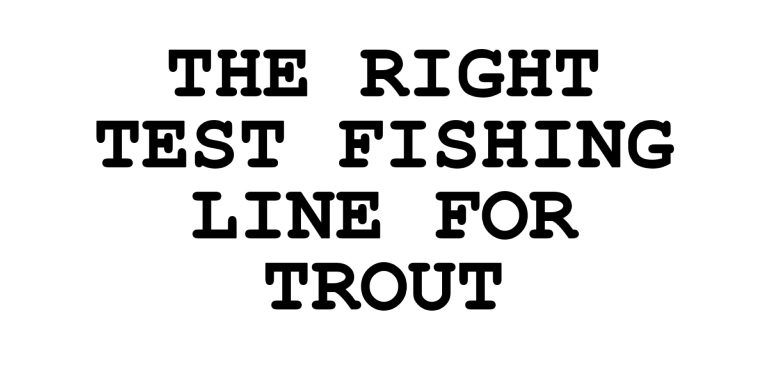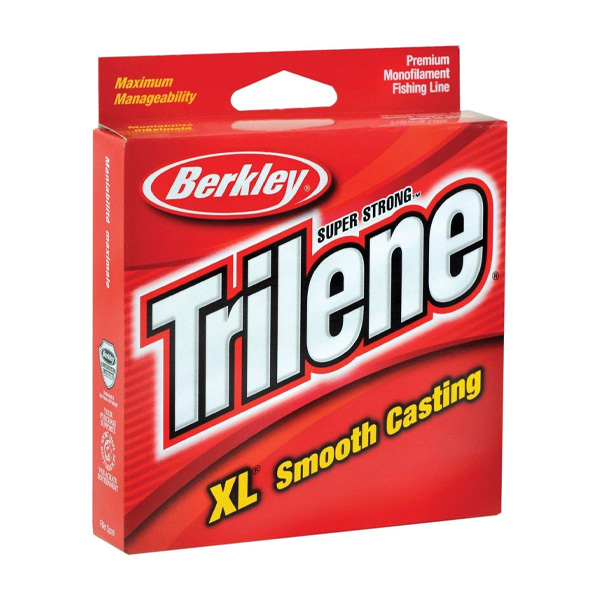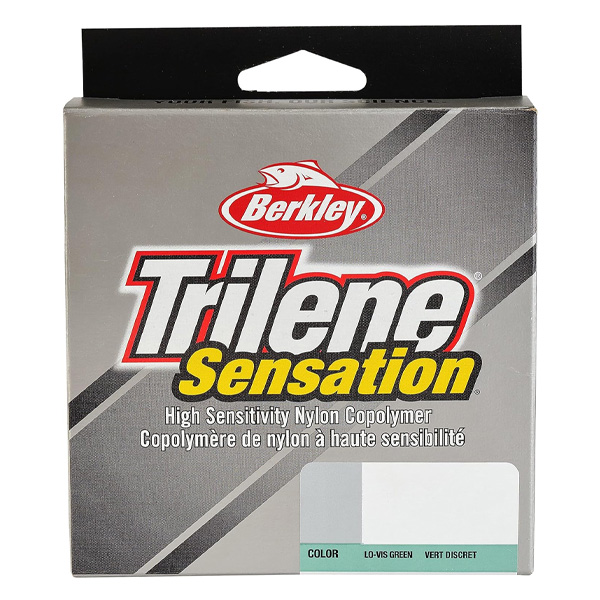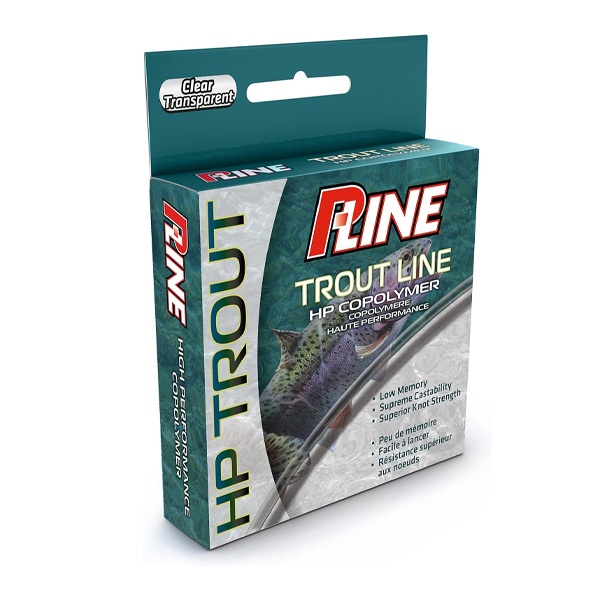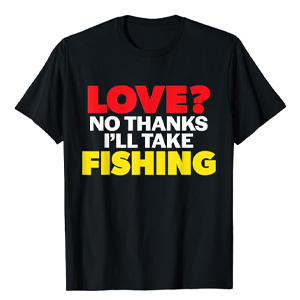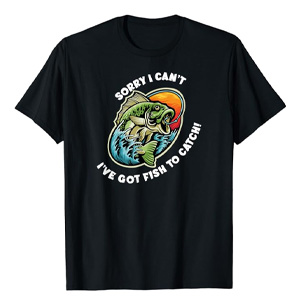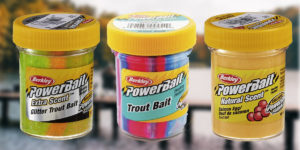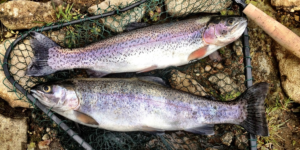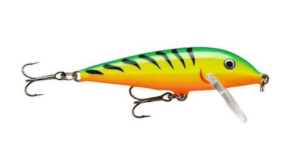There are a lot of variables when it comes to catching trout, and knowing what fishing line to use is one of the more important one. Having the wrong line means losing fish or getting no bites at all. In this article, we will look at what fishing line you need for using a spinning rod setup for trout fishing.
What Is The Best Fishing Line For Trout?
When fishing for your average stocked trout with a spinning rod, monofilament fishing line of #2 to #4 strength is good. You can use #6 as well but you sacrifice castability. Beyond this, there are some considerations as to the material and color of your fishing line that I’ll also cover below.
The Basics of Fishing Line Strength
Fishing line is rated in how many pounds of stress you can put on it before it breaks. This is rated in pounds of weight yielding test rating. Fishing line test ratings range from 2# on up over 100# in breaking strength. One thing to remember is that this is a static load rating under optimum conditions. Line condition can greatly affect the actual strength of the line on your reel.
Why 2-4# Test Fishing Line For Trout?
In general, if you are casting spinners, using or bobber or light bottom rigs, you will be find using 2-4# test monofilament fishing line for trout. Very rarely will you encounter fish that are heavy enough to break your line due to their sheer size. More likely, your line is going to break due to a poorly tied or incorrect knot, or some damage to the line.
Using Too Heavy Of Fishing Line
A common mistake is to use too heavy of a fishing line when going after trout. It can feel rather scary to be using what feels like a delicate, gossamer thin line to catch fish. The reaction is to size up to a 6# or even 8# test line. The problem with this is that the larger diameter lines suffer from reduced (how far you can cast) and more on the spool.
Using Light Fishing Line For Trout Fishing
Unless you are targeting very large trout, it is hard to go too light on your fishing line when targeting trout. Rarely will fish exceed 1# in weight and there are several other things that make fishing with light line possible, without constantly losing fish due to line breakage.
Monofilament line inherently has some stretch, so when fish hit your lure or are fighting you, it has some give, like a shock absorber. Next comes your rod. Unless you are fishing with a severely stiff rod, as the fish pulls, it will flex, absorbing that energy. Lastly is the drag on your reel. If correctly set and working properly, it is the last failsafe to keep you from breaking your line.
The vast majority of times, line breaks happen due to damage to the line or because you are using the wrong knot or it is tied incorrectly. Big tip here is to always check your line and clip off a couple of feet before you go out on every fishing trip.
What About Braided Line For Trout Fishing?
If you like, you can use the lightest of braided lines for trout fishing. I generally don’t advise it due to a couple of factors. The first being that while newer braided lines have greatly improved in softness, they still tend to have more memory than monofilament line.
The next issue would be that braid has no stretch. The extra give of monofilament line absorbs some of the shock when fighting fish. If you use braided line, then you absolutely want a softer fishing rod to take up that shock.
Lastly, it is a real pain to break loose if you snag your line on something. It is tough and leaves a lot of line sitting on the bottom of the lake.
Other Fishing Line Attributes
Beyond the pure test strength of a fishing line, there are several other important factors to consider when fishing for trout.
Castability
The castability of a fishing line is an overall rating of how well any specific line casts. There is no actual metric for it, but is a subjective measure of how well a line comes off the reel and goes through the eyelets.
A small-diameter, soft line is the ideal combination of traits for a fishing line if you are fishing with a spinning rod.
Line Stretch
All monofilament line has some stretch. This is either a good or bad thing. As mentioned above in talking about line breakage, its stretchiness acts as a shock absorber when fighting a fish.
The downside to stretchy line is that it is not responsive when you want to set a hook or feel a very slight nibble. For this reason, in situations where those are critical, fisherman will often switch up to a fluorocarbon or braided line.
For typical trout fishing though, line stretch is not an issue and will likely work to your benefit, especially if you are just getting started in fishing and are working on your skills when it comes to fighting fish.
Line Memory
Another trait that manufacturers will often refer to is line memory. This is the tendency of line to hold the shape is had sitting on the reel. I have literally had cheap monofilament line that had been sitting on the reel too long lay on top of the water in curls before.
Line that wants to remain curled up is a problem in that it will not want to cast as well and just generally cause problems.
Does the color of fishing line matter?
The best color for fishing line been a huge debate for years. Manufacturers are always coming up with new claims about how and why their color of line is best and how it is invisible to fish. In my experience, it doesn’t matter that much. But if you are worried about fish seeing your line there are some things to know.
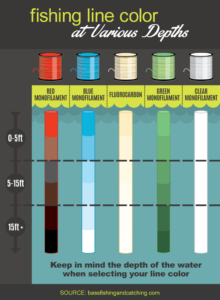
Red Fishing Line Does Not Disappear Underwater
The claim that red fishing line disappears underwater is not true. While it is true that water absorbs the red spectrum as you descend in the water column, red line remains highly visible.
It should also come as no surprise that yellow fishing line remains highly visible underwater. Now you may want to still consider using it if you are in a situation where you want to be able to keep track of where your line is. In this situation, a leader of a less visible color will be helpful in not spooking fish.
Clear Or Tinted Fishing Lines Work Best
Most of the water you will likely be fishing in will be between clear and stained. This combined with the fact that fish tend to hunt from below means that you want a clear or light colored line that will disappear in the brighter waters above the fish you are after.
Video of fishing line colors underwater
Reel Hazardous did an excellent pair of videos testing what different lines look like underwater and the results were moderately surprising. Clear and slightly tinted monofilament and fluorocarbon lines were generally the most invisible under all water conditions. In darker and stained waters though, a slightly more tinted color might be beneficial.
Final Answer To What Size Of Line For Trout Fishing
The simple answer is that for general trout fishing you should use 2# or 4# fishing line. Beyond that, you should be aware that color does play a part in how visible your line is underwater. Additionally, quality lines with low memory and high castability will improve your success and overall enjoyment of your fishing trip.
Some Trout Line Suggestions
If you are casually fishing just once in a while, then literally any brand of fishing line will do. But if you are wanting something that is an upgrade from whatever came on your fishing reel, then here are a few suggestions for reasonably priced fishing lines that are perfect for trout fishing.

